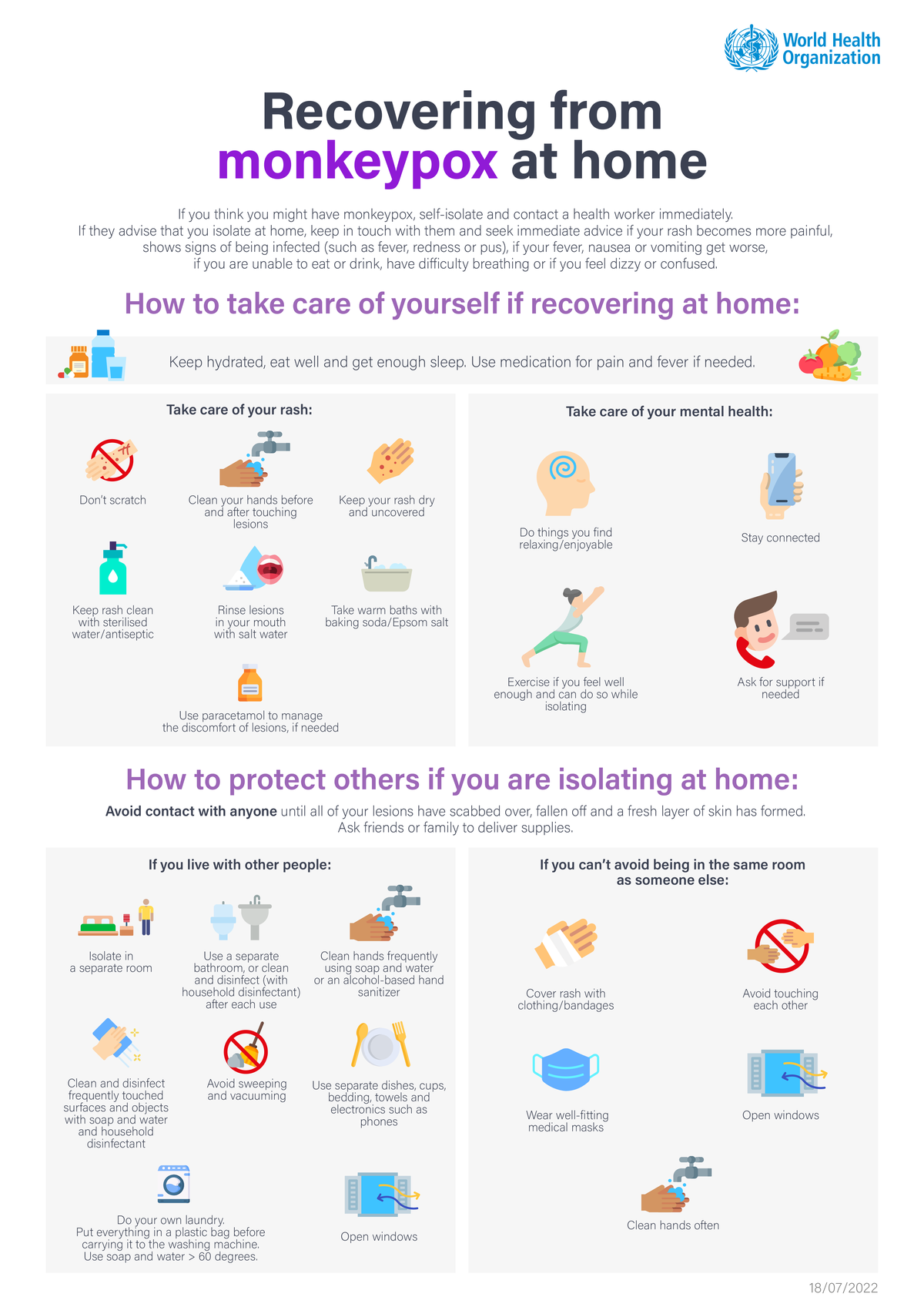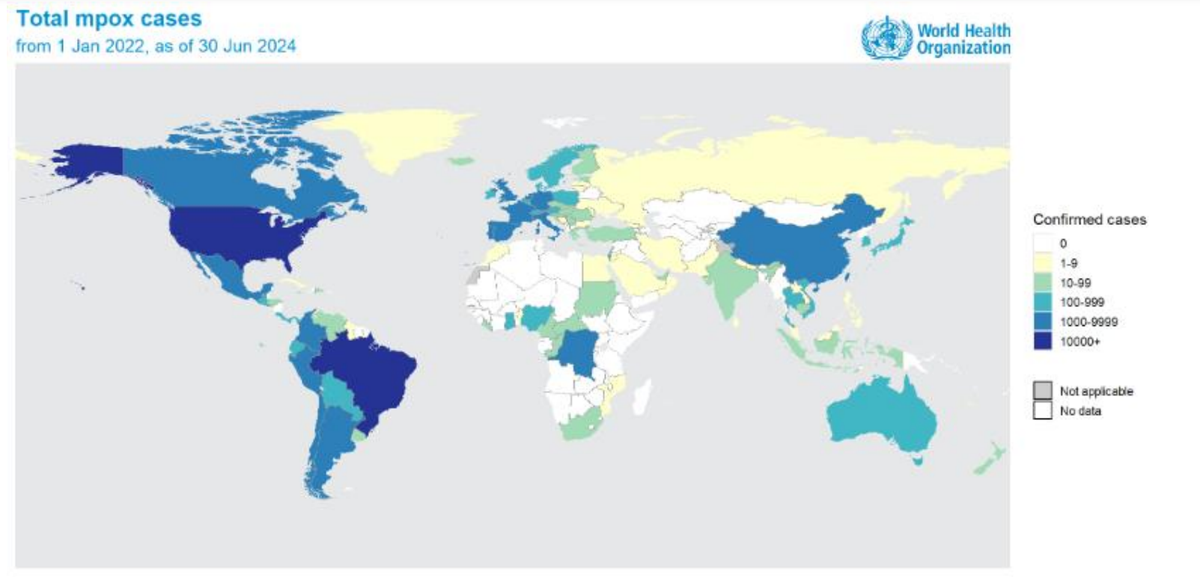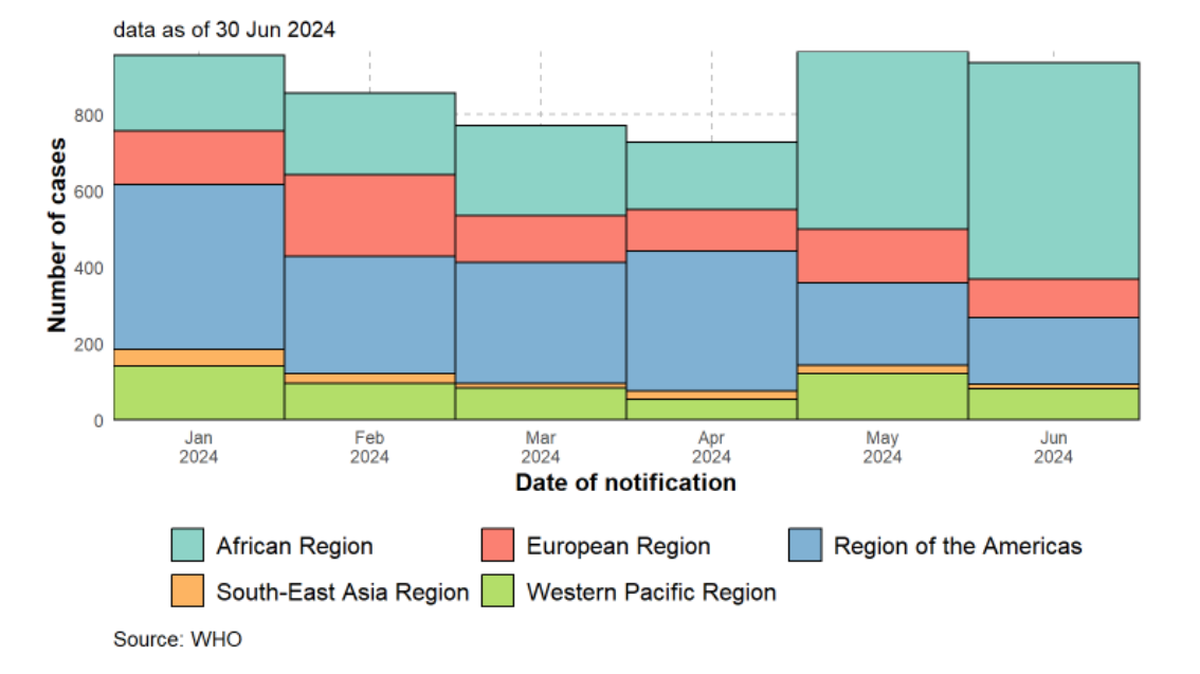The story so far: Ahead of the World Health Organisation’s (WHO) emergency committee meeting scheduled for Wednesday, August 14, 2024, the health agency regraded the ongoing multi-country mpox outbreak to an “acute” grade 3 emergency in a report published on Monday, August 12.
An mpox outbreak is sweeping through west, central, and east African countries, and cases have also been reported from the Americas and Europe. The outbreak, which first started in 2022, has continued unabated with a recent surge in cases reported from arounf the world.
What is mpox?
Mpox, or monkeypox, is a rare zoonotic (disease that spreads from animals to humans) caused by the monkeypox virus which belongs to the Orthopoxvirus genus in the Poxviridae family. Other diseases caused by viruses from this family include smallpox, cowpox, vaccinia, and more. Mpox virus is transmitted to humans through physical contact with someone infectious, with contaminated materials, or with infected animals.
Currently, two clades or genetic groups of mpox exist: clade I which is mostly found in central and east Africa, and clade II which is linked to more cases in west Africa.
The 2022 outbreak was linked to clade I of mpox.
Mpox virus was first discovered in Denmark in 1958 in monkeys kept for research, and the first reported human case of mpox was reported in a nine-month-old boy in the Democratic Republic of the Congo in 1970.
The exact source of mpox remains unknown, but small mammals like squirrels and monkeys are believed to be carriers.
The WHO decided to change the name of monkeypox to mpox in November 2022 following racist insinuations towards some communities following the outbreak earlier that year.
Symptoms
Mpox virus in humans mostly presents as rashes, which can develop into blisters filled with liquid which may be itchy or painful. The lesions dry up as the rashes heal – scabbing and eventually falling off.
Other symptoms include fever, sore throat, headache, muscle aches, back pain, low energy, and swollen lymph nodes. Infectious people can pass the disease on to others until all sores have healed and a new layer of skin has formed.

Symptoms of mpox usually begin within a week of infection, but can start 1–21 days after exposure as well. Symptoms typically last 2–4 weeks.
Most people have less severe symptoms, but some may develop more serious illness and need care in a medical facility. Children, pregnant women, and immunocompromised are usually at a greater risk of contracting the virus.
Treatment
Currently, there is no specific treatment for mpox. WHO recommends supportive care, such as medication for pain or fever for people who need it, but symptoms usually go away on their own. People suffering from mpox are advised to stay hydrated, eat well, get enough sleep, avoid scratching their skin, take care of their rash by cleaning their hands before and after touching lesions, and keep skin dry and uncovered. In case infected people cannot avoid sharing the space with others, they should keep the lesions covered with clothing or a bandage until they are able to isolate again.

Recovering from mpox
| Photo Credit:
WHO
An antiviral developed to treat smallpox (tecovirimat) was approved in January 2022 by the European Medicines Agency for the treatment of mpox under exceptional circumstances, but experience with such therapeutics is limited. Their use is usually accompanied by enrolment in a clinical trial or expanded access protocol accompanied by collection of information for future knowledge.
Three vaccines – MVA-BN, LC16 and OrthopoxVac – developed against smallpox are also approved for prevention of mpox. However, only people who are at risk are considered for vaccination. WHO does not recommend mass vaccination against mpox.

The current outbreak
According to WHO’s report published on August 12, 2024, there is an ongoing multi-country outbreak of mpox. According to data collected from national authorities, 99,176 cases of mpox were confirmed between January 1, 2022 and June 30, 2024, and 208 people died.
The outbreak has affected 116 countries, and is the worst in the Democratic Republic of Congo and neighbouring countries.

Out of the cases reported in June 2024, Americas accounted for 19% of those, while 11% were reported in Europe.
Between July and August 2024, four new countries in Eastern Africa – Burundi, Kenya, Rwanda, and Uganda – reported their first mpox cases. Côte d’Ivoire is also experiencing an outbreak, and South Africa has confirmed two more cases.

Epidemic curve of monthly aggregated number of confirmed mpox cases reported by WHO region, from January 1, 2024 – June 30 2024.
| Photo Credit:
WHO
The WHO has regraded the global mpox outbreak to an acute grade 3 emergency in accordance with the WHO Emergency Response Framework, which is the highest on the list. A grade 3 emergency requires a major to maximal response from the WHO.

Rohit Malhotra is a medical expert and health journalist who offers evidence-based advice on fitness, nutrition, and mental well-being. His articles aim to help readers lead healthier lives.

